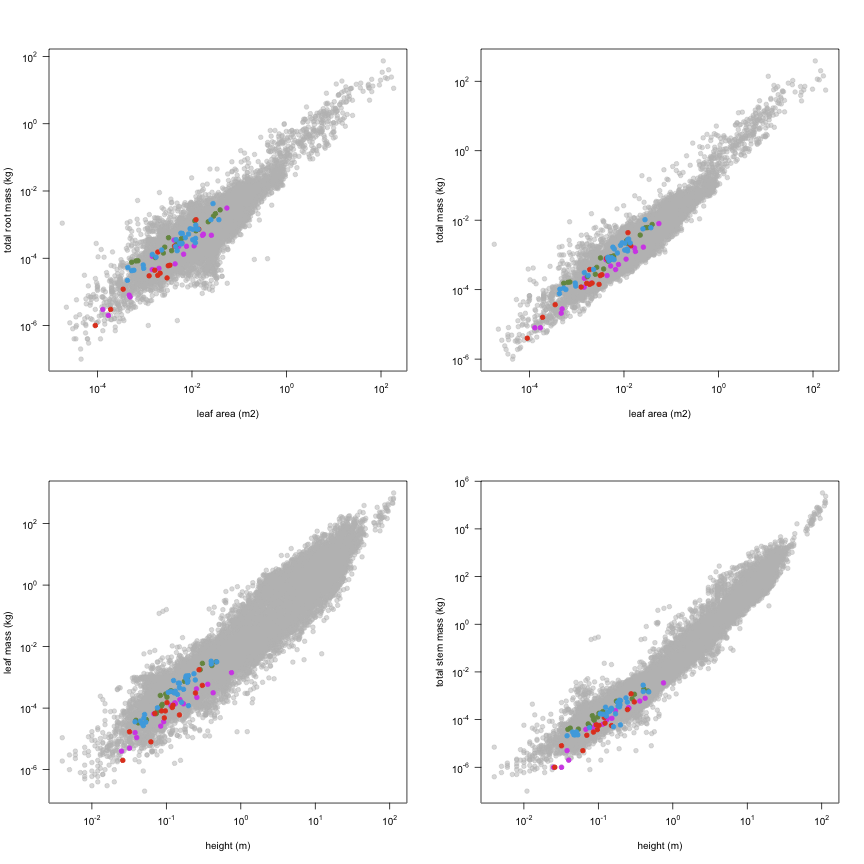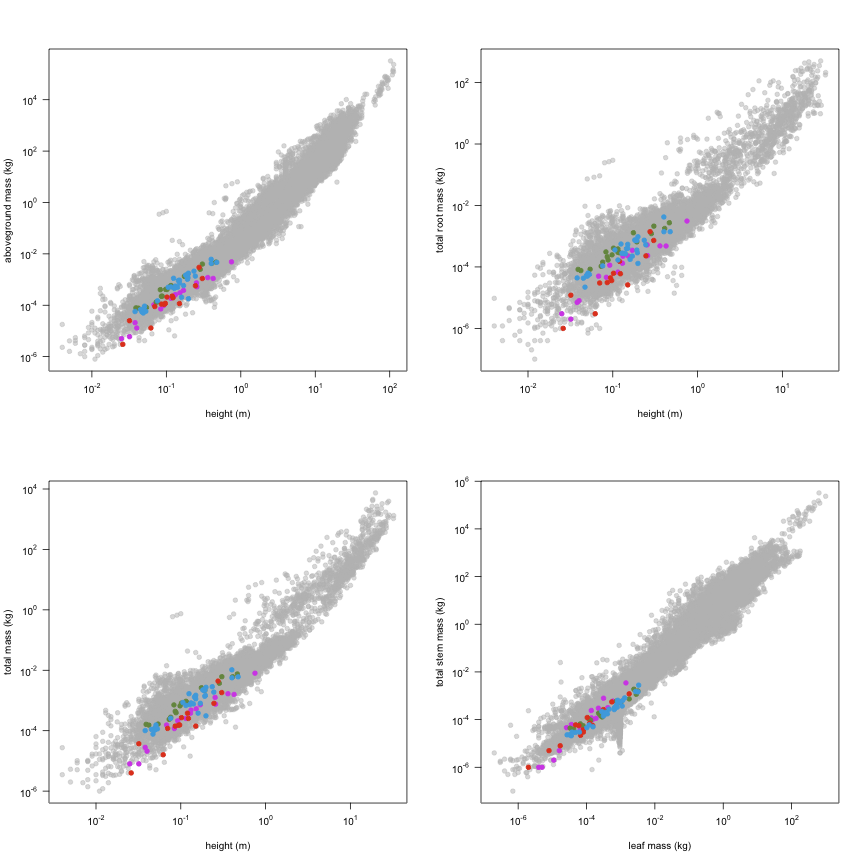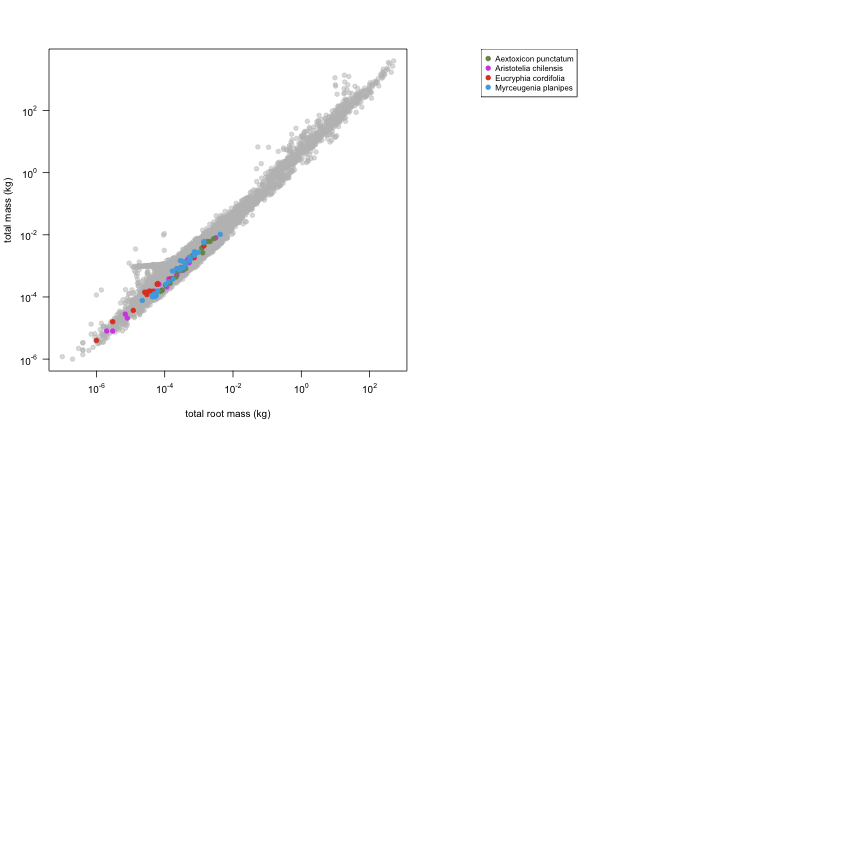-
Notifications
You must be signed in to change notification settings - Fork 19
Lusk2004
Data contributor: Christopher H. Lusk
Email: [email protected]
Address:
- School of Science, University of Waikato, Private 3105, Hamilton, New Zealand
Citation: Lusk CH (2004). 'Leaf area and growth of juvenile temperate evergreens in low light: species of contrasting shade tolerance change rank during ontogeny.' Functional Ecology, 18(6), pp. 820-828.
DOI: 10.1111/j.0269-8463.2004.00897.x
Abstract: {1 Interspecific} variation in leaf life span of woody plants should have important consequences for ontogenetic variation in biomass distribution, and hence carbon balance, in low light. This proposal was examined by measuring foliage turnover, growth, biomass allocation and biomass distribution of juveniles (25-1180 mm tall) of four evergreens differing in shade tolerance, growing in low light (2-5% canopy openness) in temperate rainforest understoreys in south-central {Chile. 2 As} predicted, ontogenetic trends in leaf area ratio ({LAR)} of two very shade-tolerant species with long-lived leaves (Aextoxicon punctatum and Myrceugenia planipes) contrasted strongly with those of mid-tolerant Eucryphia cordifolia and intolerant Aristotelia chilensis. Low-light {LAR} fell rapidly with increasing plant size in Eucryphia and Aristotelia, but was size-invariant in the two shade-tolerant taxa. As a result, although small seedlings of Eucryphia and Aristotelia displayed more leaf area than shade-tolerant seedlings of similar size (largely because of differences in specific leaf area), this relationship was reversed for plants over ~500 mm {tall. 3 Although} the slower foliage turnover of the shade-tolerant species at least partly explains this reversal, allocational differences may also be involved. Root mass fraction of both shade-tolerant species was significantly negatively correlated with size, possibly reflecting declining allocation to roots in larger plants. In contrast, root mass fraction was not correlated with size in Eucryphia or {Aristotelia. 4 Above-ground} relative growth rate in low light followed similar ontogenetic trends to {LAR}, declining more quickly in light-demanding species than in shade-tolerant associates. As a result, large seedlings (>400 mm tall) of shade-tolerant Myrceugenia and Aextoxicon grew more quickly than their light-demanding associates at the same height. The steeply declining {LAR} and growth of Eucryphia and Aristotelia suggest that these taxa will eventually die of energy starvation in low {light. 5 Results} are consistent with the idea that accumulation of an extensive leaf area eventually gives juvenile shade-tolerant evergreens a net carbon gain advantage over their light-demanding associates in low light. Awareness of long-term ontogenetic trends will enhance understanding of relationships of shade-tolerance variation with morphology and growth of woody evergreens.
The dataset includes records for 81 individuals from 4 species belonging to 5 family(ies), presenting 1 functional type(s), growing in 1 condition(s) within 1 major type(s) of habitat, with data included for the following variables:
| Variable | Label | Units | N | Min | Median | Max |
|---|---|---|---|---|---|---|
| latitude | Latitude | deg | 81 | -41 | -41 | -41 |
| longitude | Longitude | deg | 81 | -72 | -72 | -72 |
| a.lf | Leaf area | m2 | 80 | 0.00009 | 0.0046 | 0.055 |
| h.t | Height | m | 81 | 0.025 | 0.12 | 0.75 |
| m.lf | Leaf mass | kg | 81 | 0.000002 | 0.00022 | 0.0033 |
| m.st | Total stem mass | kg | 81 | 0.000001 | 0.00014 | 0.0035 |
| m.so | Aboveground mass | kg | 81 | 0.000003 | 0.0004 | 0.0061 |
| m.rt | Total root mass | kg | 81 | 0.000001 | 0.00023 | 0.0042 |
| m.to | Total mass | kg | 81 | 0.000004 | 0.00068 | 0.01 |
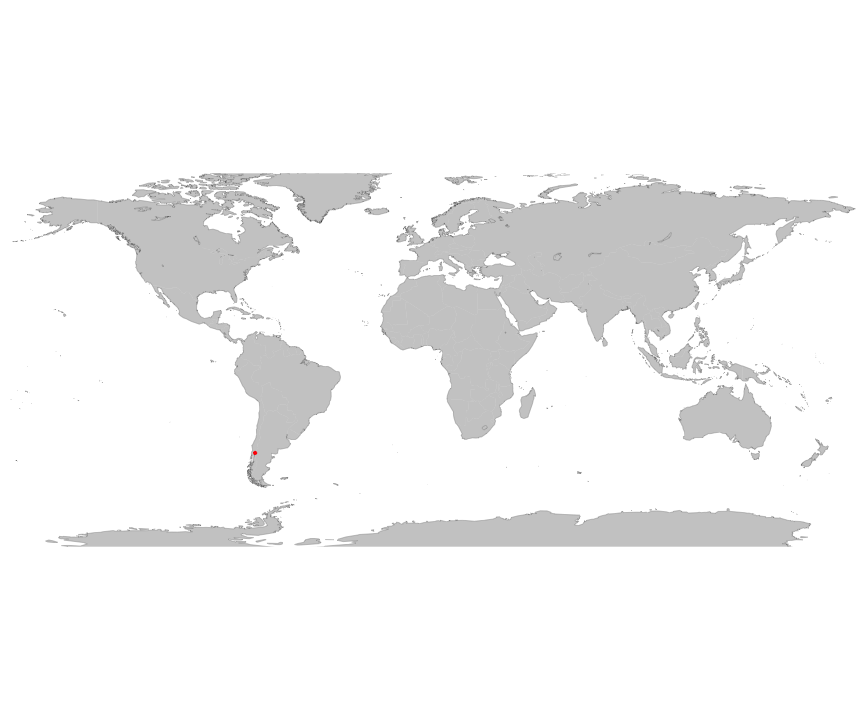
And locally within the country:
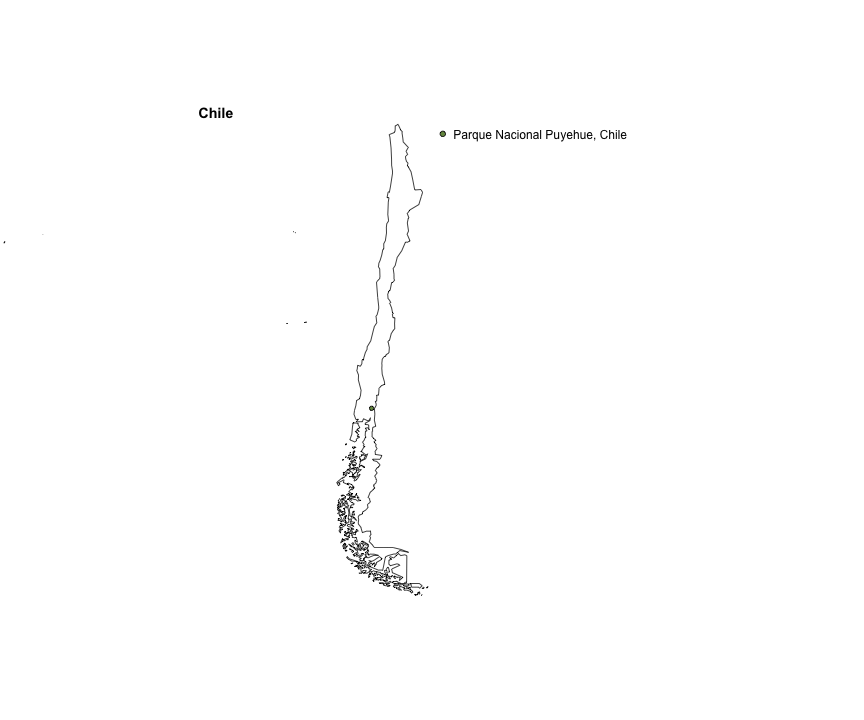
The sites sampled are:
| Location | Longitude | Latitude | Vegetation |
|---|---|---|---|
| Parque Nacional Puyehue, Chile | -72.18 | -40.65 | Temperate rainforest |
The growing conditions of sampled plants was:
| Location | growingCondition |
|---|---|
| Parque Nacional Puyehue, Chile | field wild |
| Species | Family | Pft |
|---|---|---|
| Aristotelia chilensis | Elaeocarpaceae | evergreen angiosperm |
| Aextoxicon punctatum | Aextoxicaceae | evergreen angiosperm |
| Eucryphia cordifolia | Cunionaceae | evergreen angiosperm |
| Myrceugenia planipes | Myrtaceae | evergreen angiosperm |
Sampling strategy: This study was carried out in a 35-year-old second-growth forest fragment dominated by Nothofagus dombeyi, in Parque Nacional Puyehue, Chile (40deg39'S, 72deg11'W). Seedlings 25-1180 mm tall of four evergreens differing in shade tolerance were sampled in low light (2-5% canopy openness). Seedling growth was measured from April 2002 till March 2003, when plants were harvested for calculation of growth and biomass distribution parameters.
Leaf area: The total foliage area of each sapling was measured using An ADC AM100 leaf area meter (ADC BioScientific, Hoddesdon, Hertfordshire, England).
Stem cross sectional area: Basal stem diameter (immediately above any root flanges) was measured on two orthogonal axis, using electronic callipers.
Height: Height was measured as the length of the longest stem, from the ground to the apex.
Biomass: Saplings were divided into root, stem and leaf fractions, and then dried at 70degC for 72 h. Leaf petioles were included in total leaf mass.
Other variables: The light environment of each seedling (% canopy openness) was estimated using a pair of LAI-2000 canopy analyzers (Li-COR, Lincoln, Nebr); Mean annual rainfall provided.
Year collected: 2002-2003
This is how the study Lusk2004 fits in the entire dataset (grey). each colour represents a species. A legend of species names with colours is included at the end for reports with 1 < n < 20 species.

